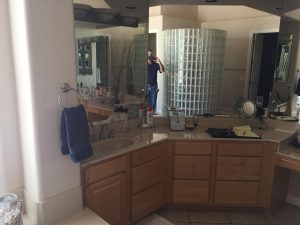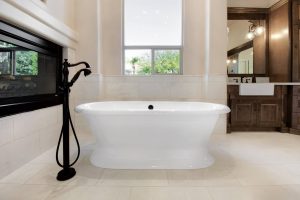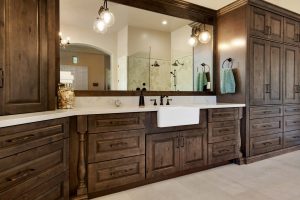

It’s spring! So, all of you who have been planning and waiting for nice weather to start their home
renovation work, the wait is over. Regardless of whether you are planning to repaint the house, update
the plumbing, add more space, or do some roof repairs, spring is the perfect time for it. However, even
with these ideal conditions, you can still run into some problems while renovating your house, especially
if it’s an old one.
While you cannot completely avoid some of these problems, you can prepare and learn how to deal
with them, and that is precisely what we will talk about today. So, let’s take a look at some of the most
damaging issues you can come across while renovating your old house.
Worn-out or damaged wires
Worn-out and damaged wires are not that uncommon even in newer homes. However, if your house
dates back to the 1950s-60s, the chances are that you will have to upgrade the wiring around your
entire home. Back then, people didn’t have appliances like microwaves, hair dryers, and other devices
that require a high energy output. So, when you plug a couple of these devices into your outdated
electrical grid, you can experience power outages. That is why you should hire a licensed electrician to
bring your house wiring up to today’s codes and standards.
Outdated and blocked pipes
Next, you can stumble upon outdated and blocked pipes. If your house is 50 or more years old, then it
probably has galvanized pipes. This type of pipe was commonly used in the 1960s and they are prone to
rust and clogging up. However, even if you have replaced your outdated pipes with ones that fit today’s
standards, you can still experience blockage, especially with your sewer line.
Tree roots, sediment, and other debris can pile up in the sewer pipes over the years, causing all sorts of
problems. While just a decade or two ago you had to tear down your pipes to clean them, thanks to
Australian ingenuity now there is a less intrusive method. You see, blocked drains in Sydney are cleared
using high-pressure water jetting systems. This is an incredibly effective solution, which can clean almost
any type of debris from your pipes and drains. So, make sure to check if somebody is offering these
services in your area.
Structural damage
Structural damage is common with old houses that have wooden frames. Pests like rats and termites are
one of the biggest causes of structural damage in houses, and if left untreated, they can make your
house unfit for living. Cracks in the walls and ceilings, blisters in floors, etc. are just some of the many
telltale signs of pest infestation. Luckily, they are relatively easy to deal with. There are numerous ways
to get rid of them, but you should start by calling a professional and licensed exterminator.
Hidden mold spots
Finally, old houses generally have mold problems. In most cases, this is due to bad insulation or even a
lack thereof. While some mold spots are easy to spot, you can uncover additional ones while doing
renovation work around your house. One of the most common places where people find mold is the
attic. If you don’t have a proper ventilation system for your attic, it can quickly become a mold hotspot.
So, if you come across any signs of it, make sure to contact professional mold removal companies, as
they are the only ones that can fully clear your house.
Now that you know what problems you can run into while renovating your old house, you can approach
this task without stressing too much. Just ensure that you have a backup solution for any of these four
problems, and you won’t be surprised by any of them.
About the author:Will Sandford is a Sydney based wood architect, blogger and contributor on interior design and ecology blogs. Besides that, he is also interested in home improvement combined with green
technology. In his spare time, Will enjoys surfing and rock climbing. He is also a regular
contributor to SmoothDecorator. Connect with him on Twitter.
It’s a rule of life: Money talks.
In the remodeling world, budget can be a four-letter word. But in order to have a successful experience, homeowners need to be honest about how much money they are comfortable spending.
Fortunately for you, we have a helpful article from The Washington Post that outlines several budget tips.
First, you need to decide on a goal. What do you want your home to look like? What area or areas of the home will you be working on? Do you want a spa-like master bathroom? Do you want to open up the kitchen?
Next, you need to figure out what you want everything to look like. Doing so will help pin down what kind of materials you will require. The materials you prefer will have different price points, so it’s helpful to pin those down and get a rough idea of their costs.
Doing these first two steps will lead you right into Step 3: Figuring out how to pay for everything.
Unless you are paying in cash, like the article notes, you will be borrowing the money from somewhere. Figure out whether that is a home-equity loan, a home equity line of credit, or a good old fashioned lending institution, the article says.
With those tasks completed, your attention must turn to the future: Is this a project in a forever home or are you probably going to sell at some point? If it is the former, feel free to splurge, the article says. If the latter, make sure you are getting the most return on your investment.
Now you are ready for your quotes. Contacting contractors will give you an idea of what your projects will cost. Going through quotes with a designer and contractor will help you figure out what you can save money on and where you should splurge. And don’t forget to budget a little extra (the article says 10 percent to 15 percent) for hidden expenses.
One thing you might not have thought to budget for in a remodel is something for your pet(s).
Yes, even our four-legged family members want to age in place. According to a post from Remodeling online, more homeowners are including dedicated dog showers in their remodel.
Have a great week!
We will never pass up an opportunity to talk about our love for cabinets. Whether they are made in a factory or custom, cabinets can make or break your kitchen remodel.
In addition to adding storage and convenience, cabinets add style and serious wow factor to any kitchen, as this article from the Houston Chronicle points out. If you are in need of inspiration, our friends at Top Reveal have assembled a comprehensive list of kitchen cabinet and shelf ideas to help create a one-of-a-kind look for your space.
The article does a great job of explaining some of the differences between factory-made cabinets and custom cabinets. One big myth that the article dispels right off the bat is that factory-made is not as good as custom. That’s not the case. Both types of cabinets offer high quality and can totally deliver on what you want, it just depends on your needs.
Factory-made cabinets are trimmed by hand using first-class equipment and boast an impeccable finish that’s applied in a controlled environment, the article says. While custom cabinets offer a precise fit, their finish cannot match that of a factory finish, since it’s in a less controlled environment, the article says.
A remodeler well-versed in both types of cabinets can come up with options tailored to your needs. And lucky for you, we know just the people.
Beautiful disaster
I love a good transformation story, and this Curbed article has it all. It chronicles the journey of a 1910 Craftsman cottage from dilapidated and stinky to stylish and prosperous.
While there aren’t any before pictures, it is worth nothing that the owner relied on her instincts (to buy an ugly house with good bones) and expertise (as an interior designer) to turn the project into a dream home.
Last but not least
Finally, here are some tips from an expert on ensuring a successful remodeling project. It’s a long read, but it highlights the importance of doing your homework, talking to a designer (hint, hint), and accounting for 10% of wiggle room on a realistic budget.
Have a great week!



